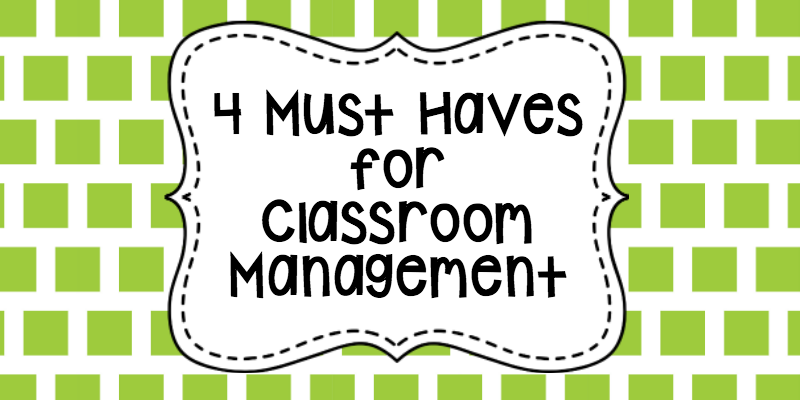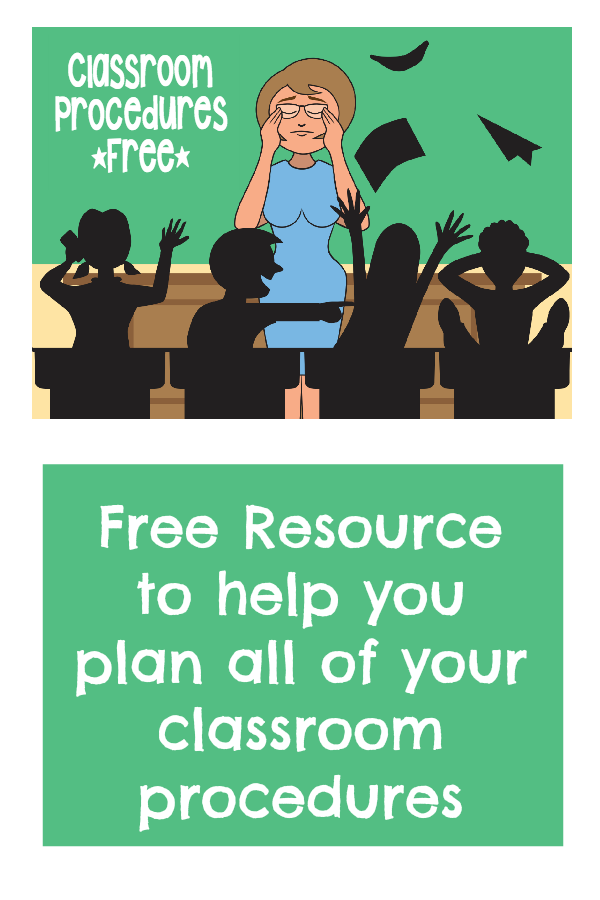New Teacher’s worry most about classroom management- and they should! Studies have shown that teachers who have problems with behavior management and classroom discipline are frequently ineffective in the classroom. They are more likely to burnout and leave the profession. We also know that if you can’t get the kids to sit down and listen- even the greatest lesson that you spent hours prepping will not work. These are the 4 most important things to get you through the first 2 weeks of school.
Plan ALL of your Procedures
- Trash- How will kids throw away trash? Will they get up during a lesson to take something to the trash can? Do they throw it on the floor? Stuff it in their desks?
- Pencils- When do kids sharpen pencils? What do they do if they don’t have a pencil? How do they borrow a pencil AND return it?
- Dry Erase Markers- How do they get a marker? Do they scribble all over their whiteboard while you are talking? Do they leave the cap off?
- Whiteboards- How do they get them? Where are they stored?
If you would like a copy of all of the procedures I had in my classroom, click the image to the right. This is something I give to new teachers at the beginning of the year. We make changes to fit their needs, but make sure we have everything written down. Put a copy of all of your procedures in your substitute file, and they will have a much easier day!
Strong Voice
Practice your teacher voice! A strong clear voice is very powerful. When you talk to students, remember to stand up, square up, and stand still! Use a formal tone. You are not their friend, you are the boss. There should not be a hint of “maybe just this once you can get away with not doing what I ask”. Don’t use slang language- “Dude, I said sit down!” Is not as powerful as, “Michael, sit down.”
Practice wait time. This is one of the steps that trips teachers up. They ask the class to be quiet, but don’t wait for that direction to be followed. They rush to the next direction. Not all students hear and then need all of the directions repeated. This is VERY frustrating to the teacher and to the students who are listening. If the words come out of your mouth, wait for them to be followed.
Plan your First Week of School
Plan which procedures kids need each day and then teach them before they will need it.
What will you say to introduce the procedures? I always use the acronym CHAMPS.
C is the conversation level
H is how the student gets help
A is the activity
M is the movement
P is what does it look like when everyone is participating.
For most of the procedures, I make small anchor charts to post around the room near the area that the procedure happens.
Give crisp instructions. Don’t use too many words. Be specific with what you want kids to do.
Entering the Classroom
Restroom
Going to Lunch
Line Up
Dismissal
Getting Supplies
Teacher Attention Signal
Turning in Papers
Going to PE, Music, Art or Computer
Getting Help
Sharpening Pencils
Cleaning Room at the End of the Day
Dry Erase Markers
Sitting SLANT Ready to Learn
Review Entering the Classroom
Practice Makes Perfect
Teacher Radar
You have to learn to know when students are off task. Scan the room looking for areas that are commonly off task. Most of the time these will be the places where students are farthest away from you. Make it obvious you are looking. Move slow as you walk the perimeter and through the desks. Developing the teacher look takes time, but you will get it! You mean business!


Facebook Comments